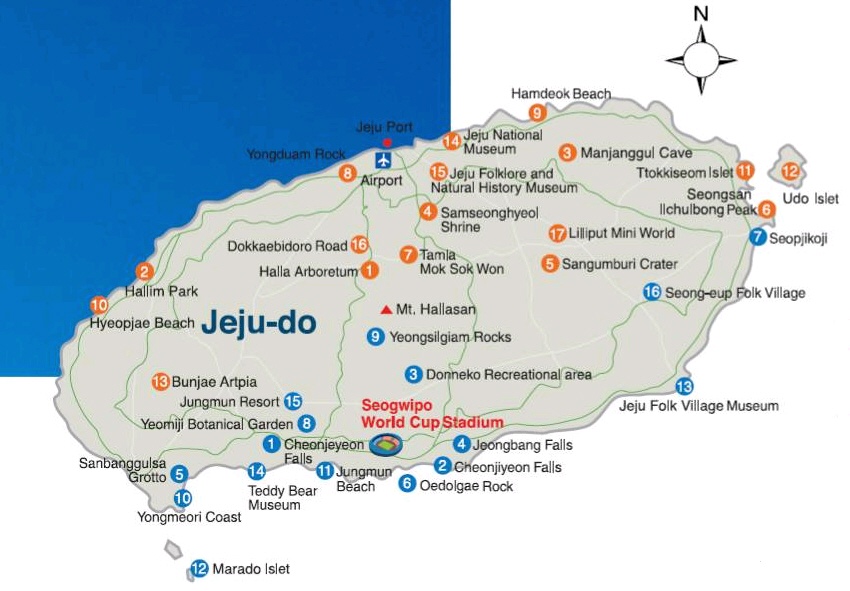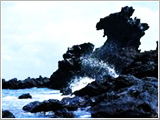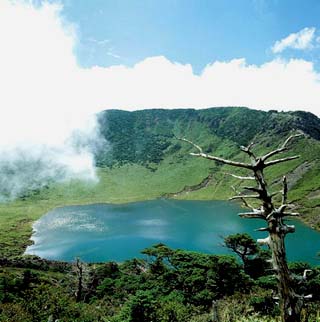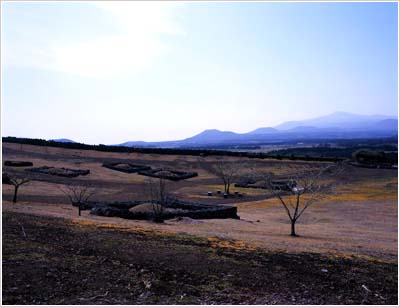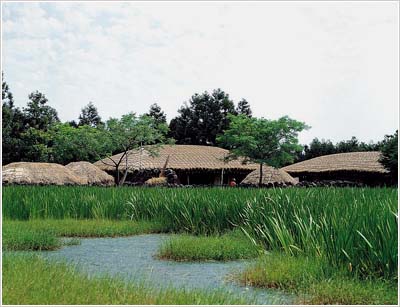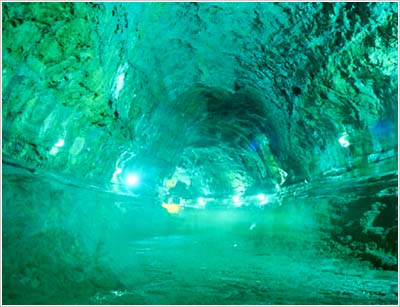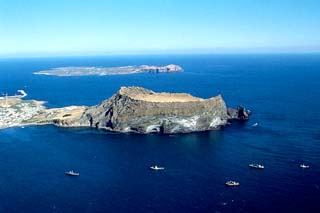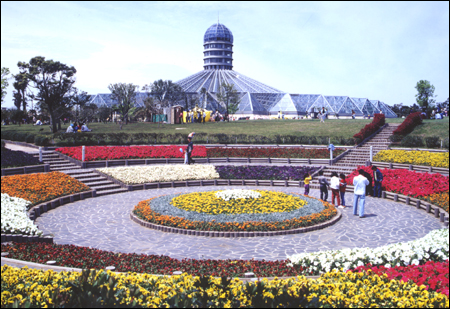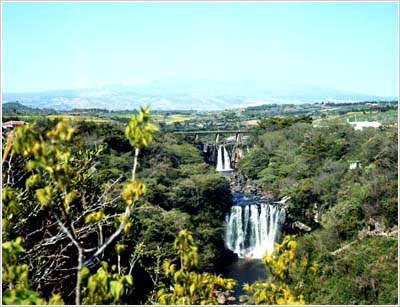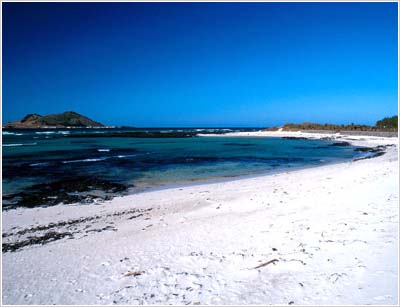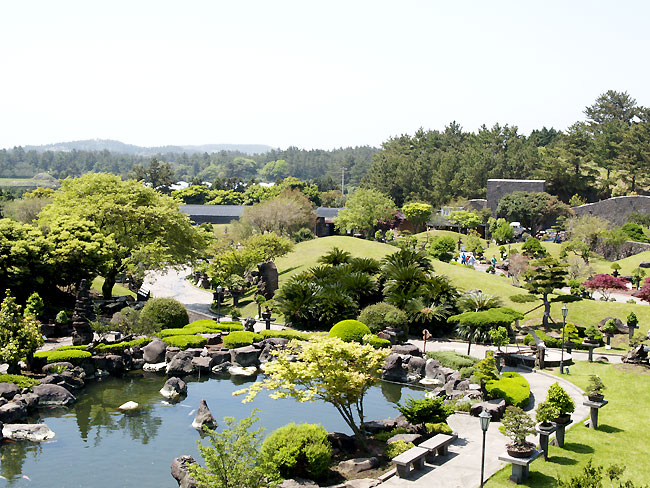Tourist Attractions in Jeju
![]() Click
image for larger view
Click
image for larger view
|
Youngduam Rock |
|
|
Youngduam Rock is an unusual lava
formation that lies on the coast just west of Jeju City.
The basalt dragon’s head with its open mouth is one
of Jeju-do’s popular tourist sites. |
|
|
|
|
|
Mt. Hallasan (http://www.npa.or.kr/halla) |
|
|
Long-extinct volcanos, towers over the island and below it are fertile fields, forest, quaint villages and fine hotels near white sandy beaches. The 5.16 and 1100 Roads pass over the lower slopes of Mt. Hallasan. The snow-covered peak of the extinct volcano poking through brooding clouds is visible from nearly every point on the island. The mountain soars to 1,950 meters above sea level, making it the nation’s highest. |
|
|
|
|
|
Sangumburi |
|
|
Sangumburi is one of the three
major craters on the island, the other two being Baengnokdam
Lake at the summit of Mt. Hallasan and the Sunrise Peak
at Seongsanpo. Sangumburi Crater is about 2km in circumference.
It is home to some 420 different species of subtropical,
temperate and some alpine flowering plants, so botanists
call it “floral treasure house.” It is best viewed
in summer or fall. |
|
|
|
|
|
Seongeup Folk Village |
|
|
Seongeup Folk Village has been
designated as a Folklore Preservation Zone. Here you
can meet the friendly island people who still live behind
stone courtyard walls in thatched-roof lava-wall homes. |
|
|
|
|
|
Manjanggul Cave |
|
|
Manjanggul Cave is situated on
the northeast coast. At 13.4km, it is the longest lava
tube in the world. |
|
|
|
|
|
Seongsanpo |
|
|
Seongsanpo, which means Fotress
Mountain Port, is a small village on the island’s eastern
tip. The name describes the unusual volcanic cone which
dominates the area. This cone, known as Seongsan Ilchulbong
or Sunrise Peak, is one of 360 parasitic volcanoes that
dot the island. Scaling up a steep slope, winds a trail
that takes you to the western edge of the crater. A
climb up this narrow trail rewards the climber with
a most spectacular view. At sunrise, the scene is unbelievably
beautiful. |
|
|
|
|
|
Yeomiji Botanical Garden (http://www.yeomiji.or.kr) |
|
|
Yeomiji Botanical Garden is located
at the Jungmun Resort. A truly gigantic greenhouse,
where some 2,000 varieties of rare plants and more than
1,700 kinds of flowering plants are exhibited. It features
a large plantation of aquatic plants, tropical fruit
trees, cactus and other delightful specialties. |
|
|
|
|
|
Cheonjeyeon Falls (http://www.hallimpark.co.kr) |
|
|
Cheonjeyeon Falls is the “Pond
of Heaven’s Emperor.” Legend has it those seven nymphs
who were handmaids of the Emperor of Heaven descended
in the middle of the night to bathe in the pool. There
is an arched bridge above the pond named Seoningyo with
the figures of seven maidens sculpted on it. |
|
|
|
|
|
Hyeopjae Beach and Hyeopjaegul Cave (http://www.hallimpark.co.kr) |
|
|
Hyeopjae Beach and Hyeopjaegul
Cave are well-known tourist sites on the outskirts of
Hallim. The cave contains awesome light colored stalactites
and stalagmites, formed as winds blew calcium0rich sand
over the ground and rain water carried the calcium down
into the black lava cave. |
|
|
|
|
|
The Bunjae Artpia (http://www.bunjaeartpia.com) |
|
|
The Bunjae Artpia is only park
in Korea specializing in potted plant cultivation and
garden plants and it is the largest of its kind in the
world. Aside from small potted plants, the park contains
more than 1,000 specimens and displays over 700 of them
daily. Chinese Chairman Jiang Zemin visited here in
November 1995. |
|
| ||
| ||
| ||
| ||
